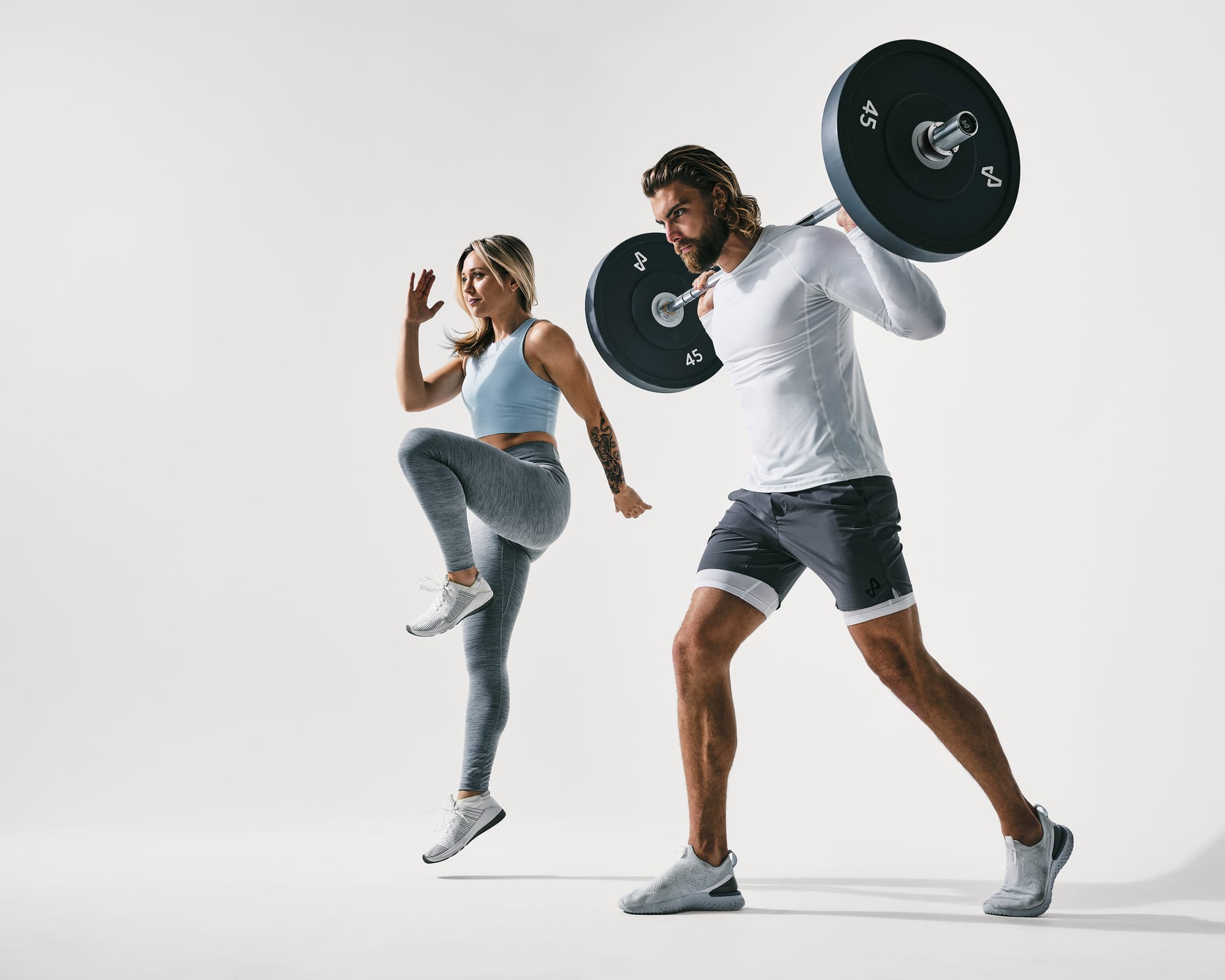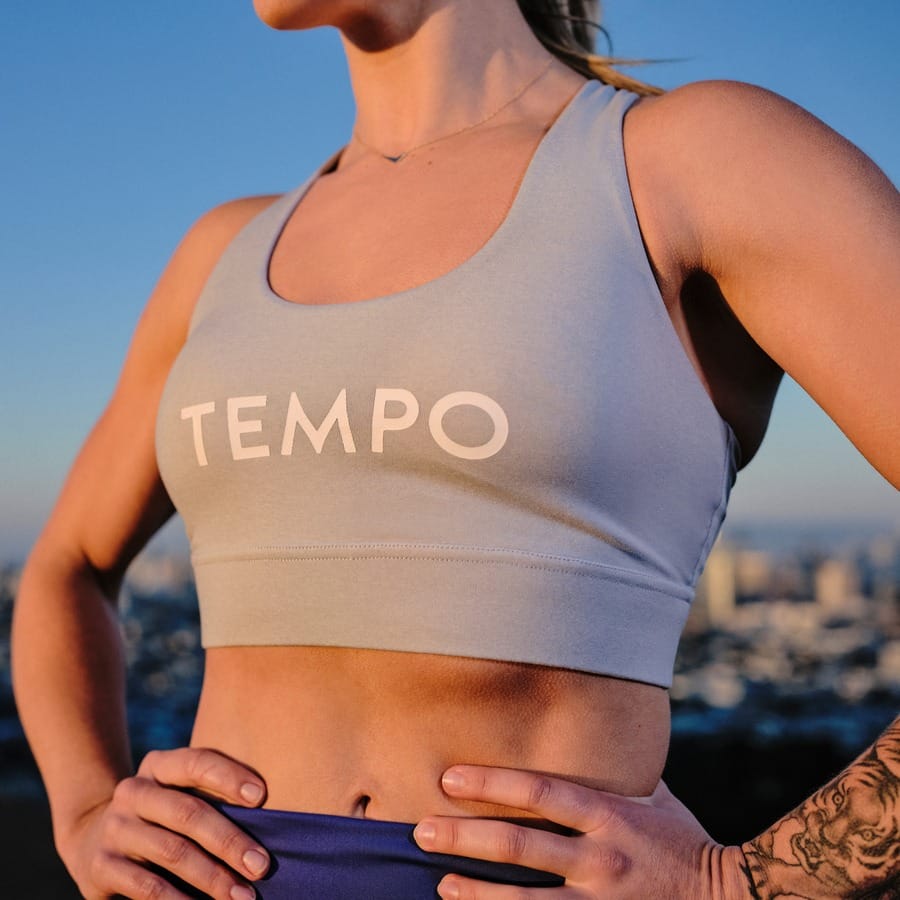“Hypertrophy” is a fancy word with a simple meaning: muscle growth. So, when we talk about
hypertrophy training, we’re talking about workouts that help you build muscle and achieve body recomposition – whether that’s increasing muscle mass or building lean muscle to improve definition. This usually involves strength or resistance training, since stressing the muscle tissues is vital to growth.
So, if your goals are to get stronger, increase muscle mass, or improve definition, this post is for you. We’ll walk you through the benefits, the variables, and the terminology so you’re equipped to tailor your training, achieve hypertrophy, and hit your personal goals.
What are the Benefits?
Let’s explore how hypertrophy training builds muscle, improves anaerobic endurance, and changes your physique.
1. Hypertrophy builds muscle mass
As we mentioned, hypertrophy training builds muscle, whether you’re new to lifting or have an established training routine. But don’t just take our word for it – the research is there. One
study found that both high-load and low-load training to failure triggers significant hypertrophy. (But high-load training reigns supreme.) Another
study researched the effects of resistance training in women over the age of 69. In both cases, in both subject groups, this type of training was found to be safe and effective at substantially increasing muscle strength.
So how does it work? Through muscle fatigue and damage, actually. The key here is
overload. The goal is to push your muscles close to their limit and perform an exercise for anywhere from eight to 12 reps. When you lift a high load (or heavier weights) and progressively push your limits while maintaining good form, you damage your muscle fibers – in a positive way! After your workout, your body gets to work repairing that damaged muscle tissue. During this cellular process, your body fuses together muscle fibers to form new
myofibrils, which are muscle protein strands.
And more muscle is almost always a good thing. It reduces your chances of injury, slows down the aging process, makes it easier to perform everyday tasks, helps prevent pain, and it’s even
good for your mental health.
But the benefits of hypertrophy training don’t end here.
2. It’ll improve your anaerobic muscular endurance
You might already know what aerobic exercise is. Think of steady-state cardio like running on a treadmill or a Zumba class. Anaerobic is shorter in duration and more intense. If jogging on the treadmill for 20 minutes is aerobic, sprinting for 10 seconds is anaerobic.
If you had to put hypertrophy exercise in a bucket, it’d be anaerobic. Think of a heavy deadlift or squat. It’s mere seconds of strenuous work. This type of muscular training is going to make it easier for you to perform short bursts of high-intensity movement. And the benefits will translate to other anaerobic exercises you do. For example, moderately heavy squats are going to make box jumps easier. Shoulder presses will make push-ups easier.
Your anaerobic training can even help your aerobic training! You will improve your power output and teach your body to push just a bit harder, making bursts of energy during a
long race, for example, that much easier.
3. You’ll notice changes to your physique
Above all else, train for your health and your happiness. But with hypertrophy training, you may also see physical changes, including shedding fat, building muscle, and improving definition.
If this is in line with your fitness goals, then hypertrophy training is going to be your best friend. Contrary to popular belief,
nonstop cardio isn’t the answer to getting lean. (It still provides other benefits, though!) If you want to change
your body composition, you need to be doing some sort of resistance training, period.
“But building more muscle will make me look bulky!” you’re saying. And we get why you think this, but it’s nothing more than a pesky fitness myth. Yes, muscle weighs more than fat, because it’s denser. But the number on the scale doesn’t tell the whole story. As you add muscle, you might weigh more, but your body will be trimmer and tighter.
Plus, because muscle tissue burns more calories than fat tissue, your body will use up more calories even at rest. Think of it like this. If you’re running on a treadmill, you’re only burning calories as long as you’re on the treadmill. But if you’re lifting weights, your body continues burning calories long after you’ve finished training. One pound of new muscle will increase your daily calorie needs by about 25kcal. And it’s feasible to gain two to four pounds of muscle a month if you’re pushing a muscle to overload twice a week. Burn more during training. Burn more at rest.
Hypertrophy training might be the secret ingredient that you’ve been missing.
The 3 Variables of Hypertrophy
Understanding the three primary factors to achieving hypertrophy will help you use this type of training tool to hit your goals. Understand what they mean and how to combine them, and you’ve found the holy grail of hypertrophy.
1. Volume
When we talk about volume, we’re referring to the total amount of work you’ve done. We calculate this by multiplying the amount of weight you lifted, the number of reps you completed, and the number of sets you completed.
While it isn’t 100% clear cut, the general rule is that the higher your training volume, the more you’ll achieve hypertrophy. This is because, in order to grow, you need to stress your muscles. That can only happen when you expose them to a relatively new or challenging stimulus. This typically means lifting a heavier weight for the same number of reps or performing an exercise for more reps.
For instance, if you’re a grown man, performing 3 sets of 10 reps of bicep curls using five-pound dumbbells might not trigger much change. The volume is simply too low. However, swap out those five-pound weights for 20-pound weights, and we’re talking about something completely different.
2. Mechanical Tension
Mechanical tension occurs when you train with a heavier weight and perform an exercise through a full range of motion. The load (meaning the weight) and the time the muscles spend under tension (meaning resisting the weight) are both important, but what does the range of motion have to do with this?
This is basically saying that the more you stretch a muscle while under a heavier load, the more you’ll achieve mechanical tension. For example, imagine performing half of a bicep curl versus a full bicep curl. Which one do you think will create more mechanical tension? The full bicep curl! The same concept applies to exercises like squats,
push-ups, and presses.
As we mentioned earlier, the biggest determinant of strength and hypertrophy is overload — meaning you lift heavy enough to fall short of your rep target. For hypertrophy, this is usually 8-12 reps. Most other factors (like volume and time under tension) are secondary. They still benefit you, but without overload, hypertrophy is much more difficult.
3. Metabolic Stress
Do you know how you get a nice “pump” after a grueling lifting session? That’s metabolic stress. Your muscles burn and look super defined and “vascular” (meaning your veins pop out) — many athletes aim for that. When this happens, your muscles are literally accumulating blood, lactate, and other metabolites. This leads to that reaction of looking more pumped.
Metabolic stress is one of the three factors making up hypertrophy. If you want to achieve hypertrophy, then your exercises need to prompt consistent metabolic stress. If you’re having a hard time with this, revisit your training volume! More specifically, you might need to bump up the weight a little.
Additional Terms and Concepts
Throughout this post, we reference various terms, like “time under tension” and “strength training.” In case you’re unfamiliar, let’s dig a little deeper in some of these concepts.
Time Under Tension
This refers to how long a muscle experiences strain. For example, to complete one standard squat might take two seconds. Now, imagine slowing the squat down (also called a tempo squat) and perform the down phase for a count of five seconds. You hold for two seconds at the bottom and stand up. You take a deep breath before beginning the next rep in the same fashion.
By doing the squat in slow motion, you’re spending significantly more working your muscles than you would with a regular squat. This means that you’ve increased the time under tension. Nice!
Increased time under tension contributes to hypertrophy because it affects volume. The more time you spend performing an exercise, the bigger your training volume. You can apply this to just about any exercise, like a push-up, by slowing down as you lower your chest to the ground.
There’s an added benefit of increasing time under tension: You’re better able to feel every moment of the exercise. If your squat technique is off, one of the best things you can do is slow down the movement. This is going to highlight where you’re going wrong and force you to correct it because if there’s anything harder than a regular squat, it’s a tempo squat. You can’t get away with poor technique.
Hypertrophy vs. Strength Training
Athletes tend to use “hypertrophy” and “strength training” interchangeably. There is indeed some overlap between the two, and they can be the same, but not necessarily. The goal of hypertrophy is to increase the amount of muscle you have. The goal of strength training is to increase the strength of those muscles.
“What’s the difference?” you’re wondering. Great question! Increasing the amount of muscle you have doesn’t necessarily mean also increasing the strength of your muscle, and vice versa (although they are often connected).
For example, a male bodybuilder might appear to be much more muscular than a male Olympic weightlifter. His muscles might be bigger and he looks like he trains much more. However, you might be surprised to find that the Olympic lifter can move a lot more weight, even though he appears smaller. Similar, the average physique of a powerlifter isn’t usually as defined as an Olympic lifter. However, they’re often much stronger because they have one goal when they train: Lift as much as possible.
Looks can be deceiving! As odd as it sounds, big muscles do not automatically equal big strength.
Start Building Muscle Mass with Tempo
So, how can you get going with your hypertrophy training? How do you go about designing your programming, and how do you know which exercises to do and what weights, reps, and sets to do them at?
Train with Tempo and access over 1,000 workouts, with more added daily, with real-time form feedback, guidance, and progress tracking. If hypertrophy is your priority, filter your classes
by “hypertrophy” or “heavy strength” classes to start tackling your goals. Focus on hitting your weekly strength goals by muscle group using our WAMS system.
You’ll never get bored and feel stuck at an
exercise plateau. And with our 3D Tempo Vision, you get your own personal trainer. Tempo will monitor your form to provide instant feedback and suggestions. So, you know that you’re always training safely and efficiently. Make gains faster and
track your progress to steadily work toward your goals.
Depending on your goals and what type of
home environment you’re training in, choose from
Tempo Studio and
Tempo Move. Studio is a more powerful, all-in-one home gym solution, while Move is designed to fit in anywhere. Both will help you achieve hypertrophy and work toward the next evolution in your fitness journey.
Managing your own programming and workouts can be tricky. There are so many ways to skin a cat that figuring out where to start can feel overwhelming. That’s why it helps to have the structure of a smart home gym set-up and the trainer to go with it. Let us guide you in determining the best exercises, sets, and repetitions to achieve hypertrophy. A healthier, happier you is within reach.
Shop with Tempo today!















